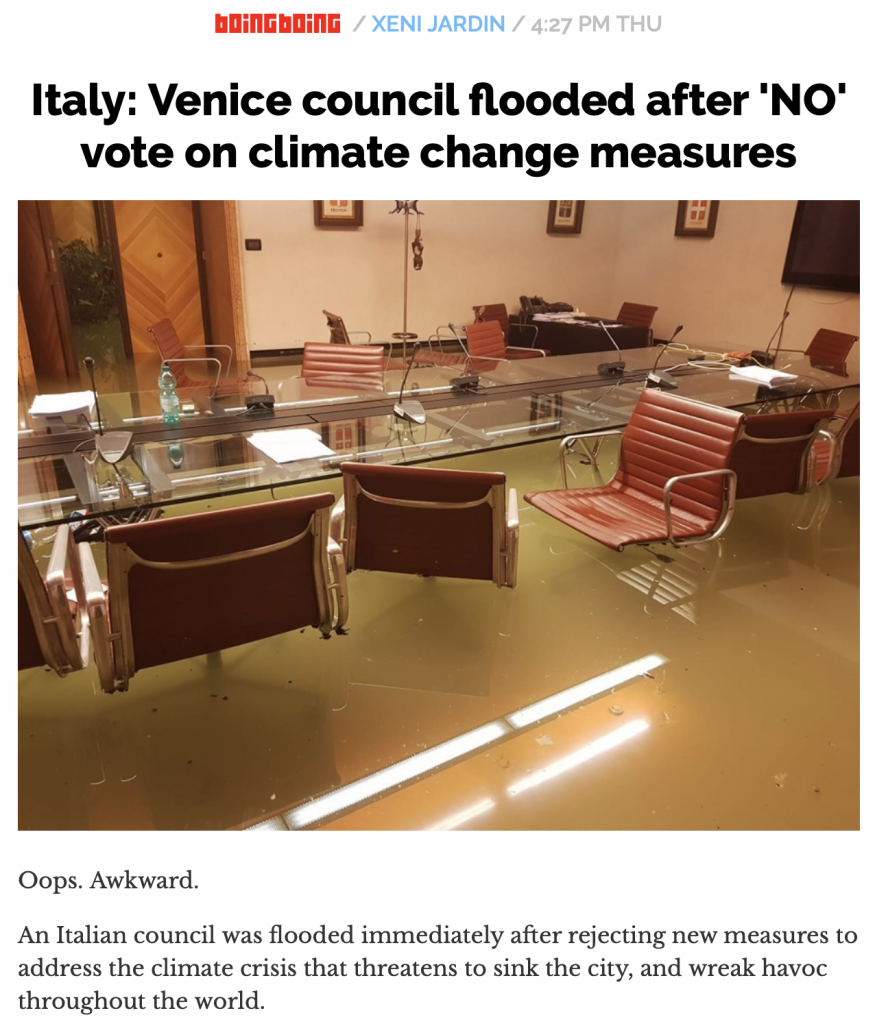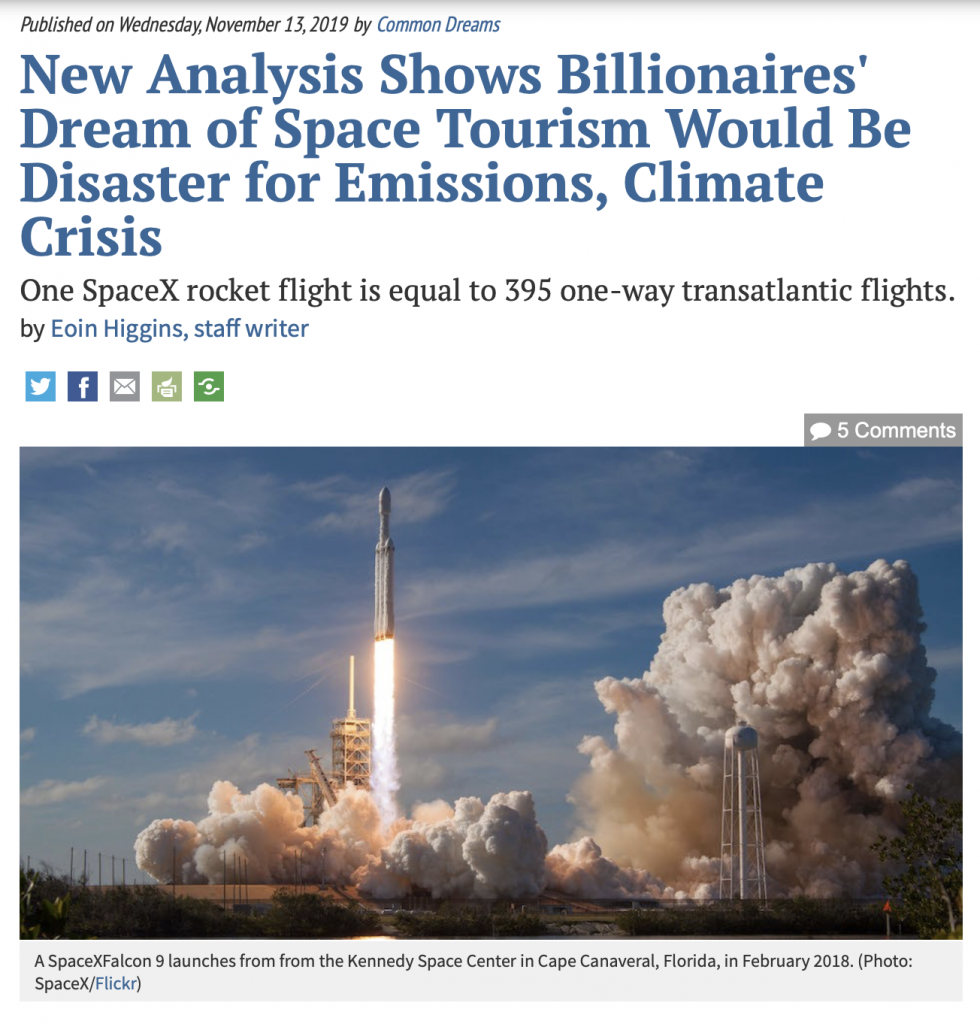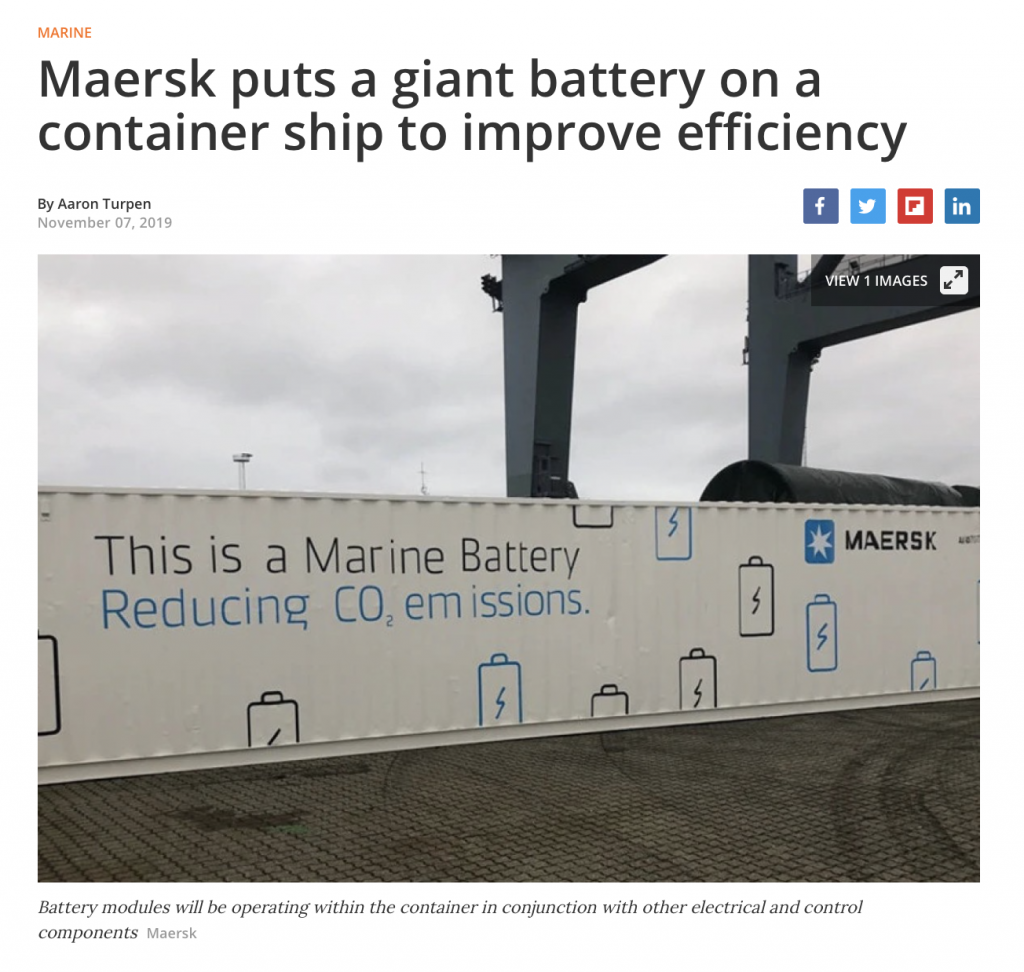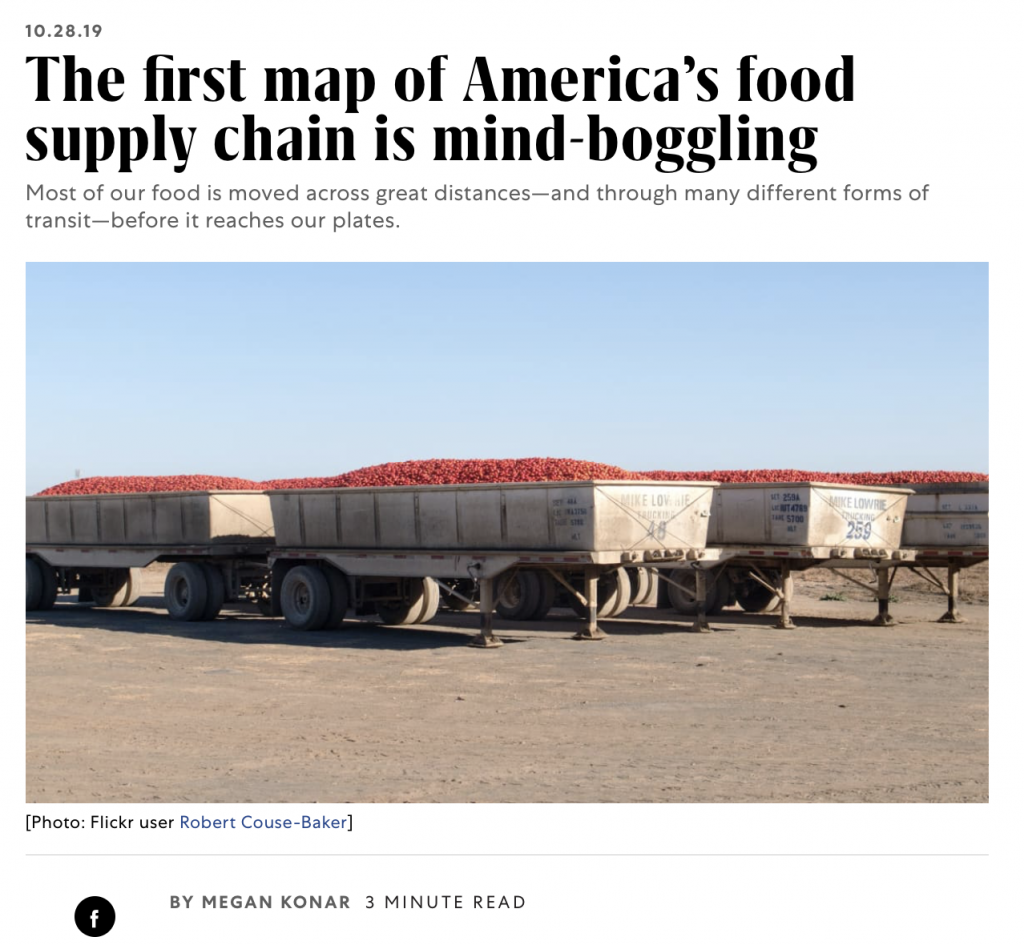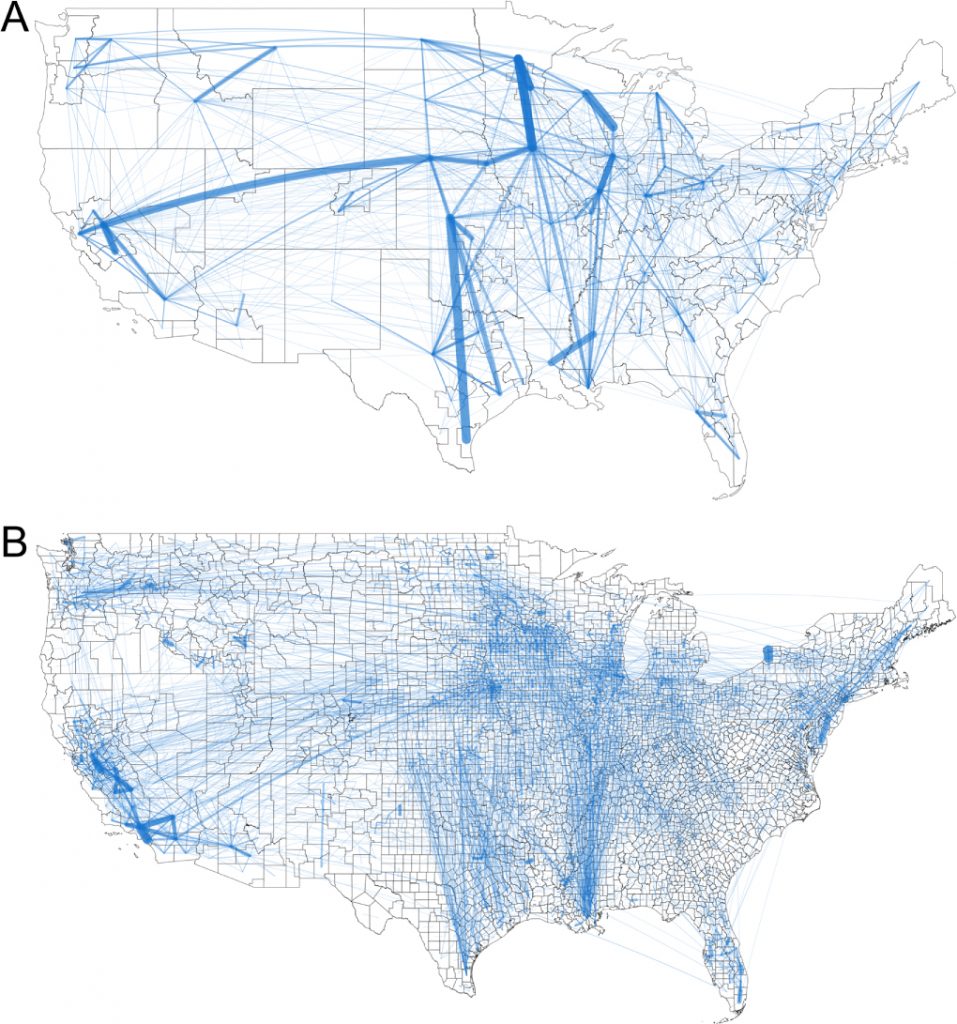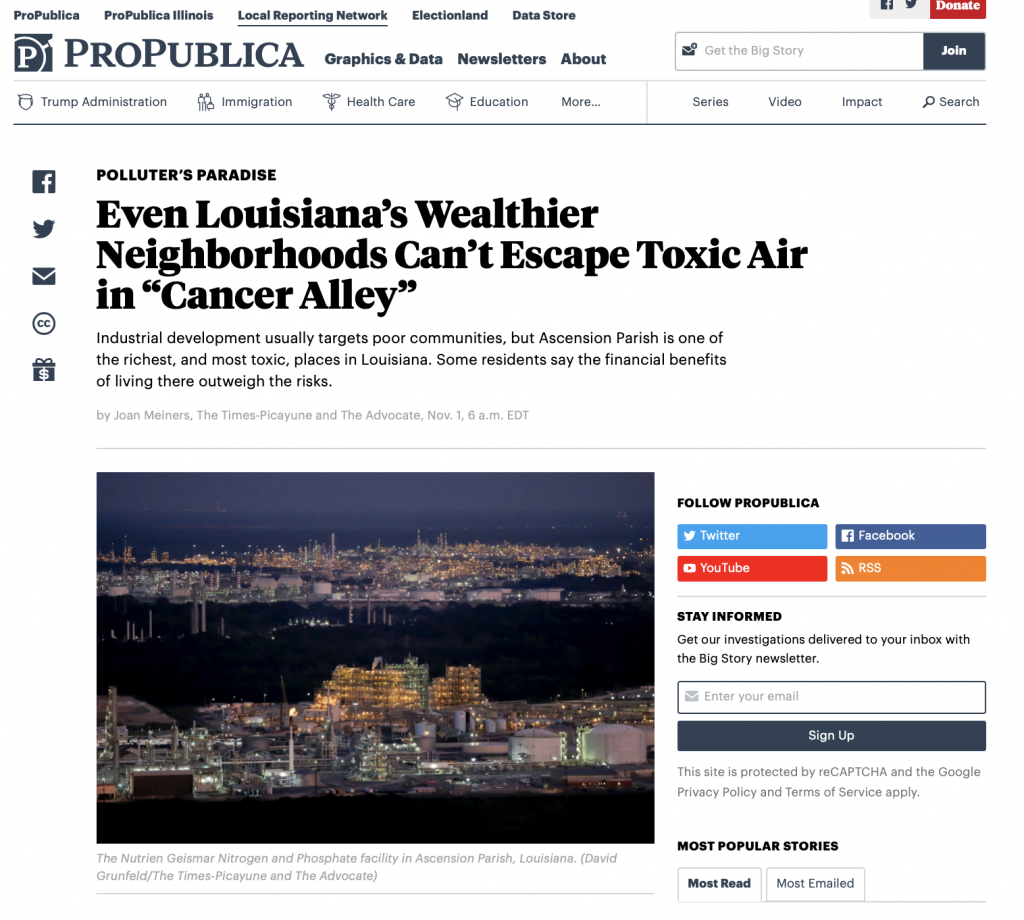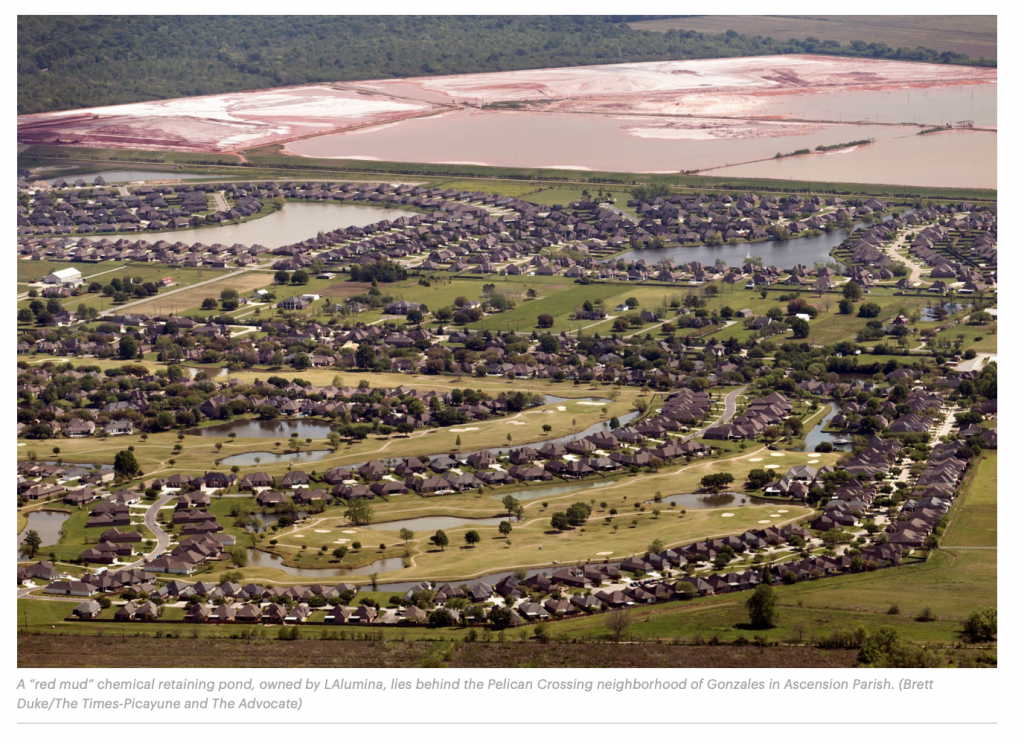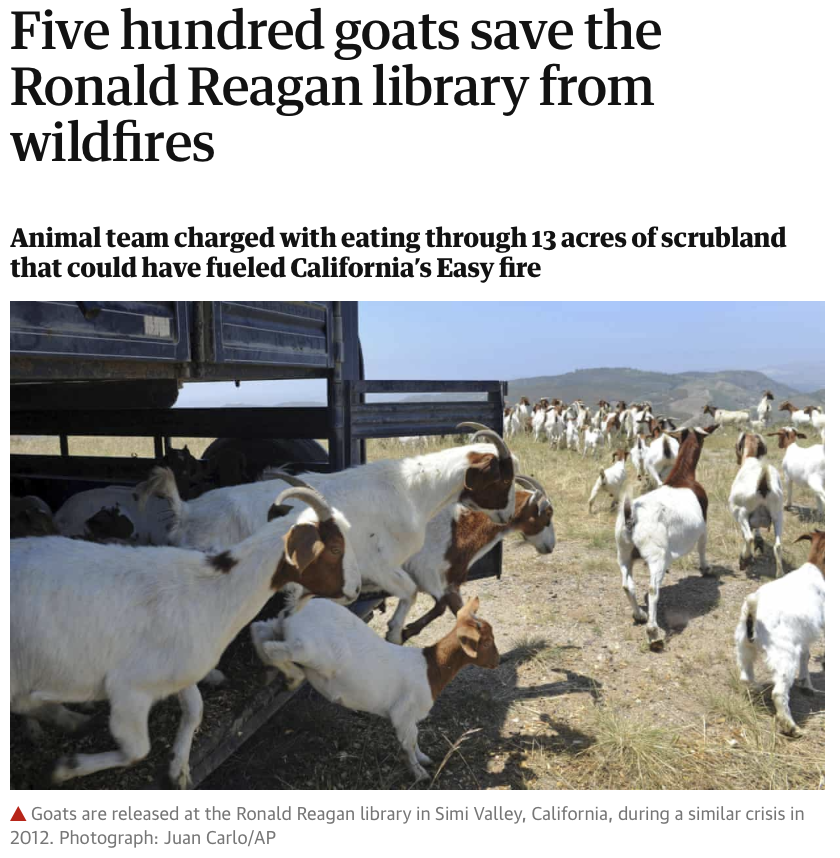Month: November 2019
Italy: Venice council flooded after ‘NO’ vote on climate change measures
An Italian council was flooded immediately after rejecting new measures to address the climate crisis that threatens to sink the city, and wreak havoc throughout the world.
The regional council of Veneto is situated on Venice’s Grand Canal. On Tuesday night, the office flooded for the first time in its history, right after rejecting measures to fight climate change.
More: Italy: Venice council flooded after ‘NO’ vote on climate change measures
More: Italian council is flooded immediately after rejecting measures on climate change
CO2 Emissions: One SpaceX rocket flight = 395 one-way transatlantic flights
Champion Travel found that:
- The SpaceX Falcon 9 B burns 29,600 gallons (112,184 Kg) of highly refined kerosene
- 3.0 Kg of CO2 goes into the atmosphere per Kg of Kerosene burned
- 112,184 Kg x 3 Kg / CO2 = roughly 336,552 Kg of CO2 per Falcon 9 launch
More: One SpaceX Rocket Launch Produces the Equivalent of 395 Transatlantic Flights worth of CO2 Emissions
600 kWh Battery in Shipping Container
This battery would charge the average US home for about 3 weeks:
According to the US Energy Information Administration, the average annual electricity consumption for a U.S. residential utility customer was 10,766 kilowatt-hours (kWh) in 2016. This is an average of 897kWh per month, around 30kWh per day, or 1,250 watts. (source)
Maersk has teamed with Trident Maritime Systems to create a 600 kWh container battery that can be placed on a container-hauling ship to provide power. The battery is now en route to be installed on the Maersk Cape Town container vessel.
The Cape Town, built in 2011, is flagged from Singapore and carries cargo between West Africa and East Asia. The battery will be installed on the ship in December 2019 and its first voyage with the new technology will happen early in 2020. The battery module was designed to take the place of a cargo container on the ship and can be charged in port, will take charge from the ship’s generator, and from the Cape Town’s waste heat recovery system. The lattermost system is in place on most Maersk ships and recharges the ship’s batteries by using the heat created by engine exhaust to create electrical power.
More: Maersk puts a giant battery on a container ship to improve efficiency
Mapping America’s Food Supply Chain County to County
Residents in each U.S. county can see how they are connected to all other counties in the country via food transfers. Overall, there are 9.5 million links between counties on our map.
All Americans, from urban to rural are connected through the food system. Consumers all rely on distant producers, agricultural processing plants, food storage like grain silos and grocery stores, and food transportation systems.
Below: Maps of food flow networks within the United States. Maps depict total food flows (tons) for the (A) FAF and (B) county scale. Links are shown for all FAF data and for the largest 5% of county links.
Read More: The first map of America’s food supply chain is mind-boggling
Article w/methodology: Food flows between counties in the United States
Even Louisiana’s Wealthier Neighborhoods Can’t Escape Toxic Air in “Cancer Alley”
Industrial development usually targets poor communities, but Ascension Parish is one of the richest, and most toxic, places in Louisiana. Some residents say the financial benefits of living there outweigh the risks.
After World War II, “you started to see the aggressive push of industry into rural, predominantly black, plantation lands,” said Craig Colten, a Louisiana State University history professor who has written books about the state’s industrial development.
But Louisiana’s love affair with oil and gas, while disproportionately affecting black communities, has hardly spared white communities.
Ascension Parish is perhaps the clearest example of this phenomenon.
More: Even Louisiana’s Wealthier Neighborhoods Can’t Escape Toxic Air in “Cancer Alley”
Five hundred goats save the Ronald Reagan library from wildfires
Diligent work by a team of 500 goats has helped save the Ronald ReaganPresidential Library from wildfires that are ravaging parts of California.
The library deployed the goat squadron during the spring in order to munch their way through around 13 acres of scrubland around the library that could’ve provided tinder-like fuel to a wildfire.
This preventive action created a fire break between the library and the Easy fire, which has menaced thousands of homes in the Simi Valley near Los Angeles. More than 1,000 firefighters are tackling the blaze, which caused flames to approach the presidential library from a nearby hillside. Treasures saved include a piece of the Berlin Wall and Air Force One.
More: Five hundred goats save the Ronald Reagan library from wildfires
More: ‘Goats are the best tool’: grazers in high demand to reduce US wildfire risk
